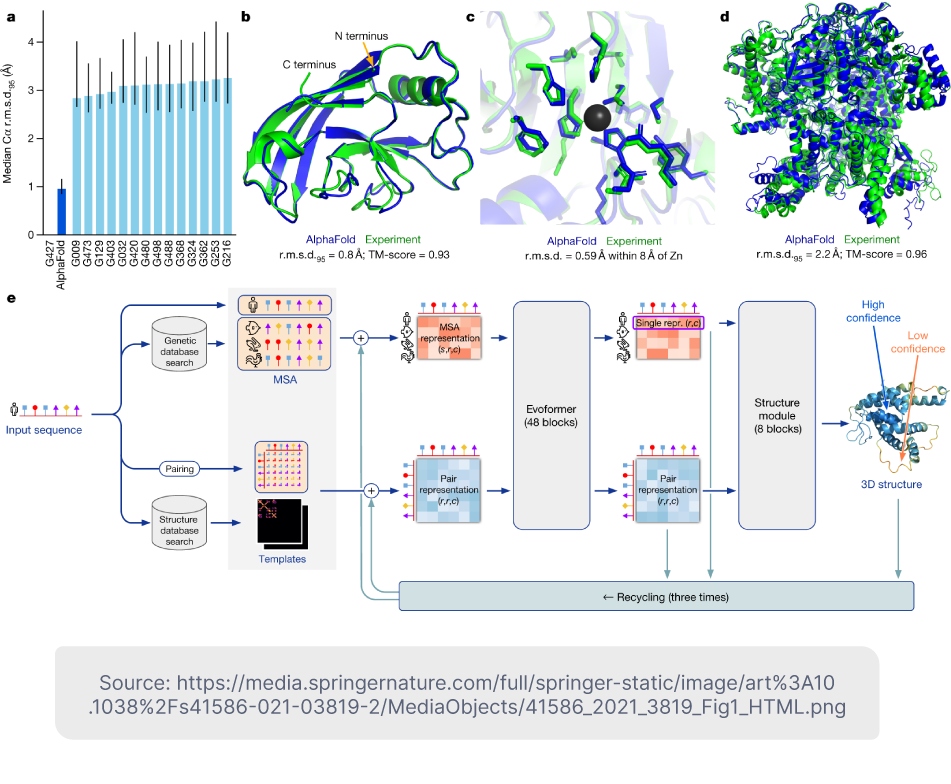5 Ways Science May Never Be the Same with AI

--
If you want to stay up to date with all the new content we publish on our blog, share your email and hit the subscribe button.
Also, feel free to browse through the other sections of the blog where you can find many other amazing articles on: Programming, IT, Outsourcing, and even Management.

In the past few years, there’s been a lot of hype around AI -- how it was going to change the world, how it would shift conversations around intellectual property, create new conditions for coding and software development, render writers, designers, and artists obsolete, and change the nature of most creative and productive work.
None of this has come to pass, at least not exactly. Lots of hype, lots of potential, but not a lot of concrete change. Though with GPT-3 and DALL-E, we have seen great strides achieved and significant potential unleashed, the great promise of AI has not carried over into other aspects of innovation and life -- and specifically not in our understanding of life itself. Until now.
Based on the powerful language modelers that fuel GPT-3 and BERT, a new AI modeler called AlphaFold has recently been unveiled. This modeler uses the same neural network architecture introduced by Google Brain researchers in 2017, except it applies them to biology, with a new transformer created with the sole purpose of working with three-dimensional structures -- and in this case, protein modeling.
Why does this matter? How will predicting 3-D shapes, and 3-D proteins, change the world? To put it simply, this time it’s not the technology itself, but the application, that matters.

What Is AlphaFold
Unlike the use cases of GPT-3 (blogs and articles) and the interesting but ultimately esoteric use cases of DALL-E’s (image creation and modeling), AlphaFold has been applied to our understanding of the base unit of life: proteins and amino acids.
The AlphaFold project has been applied to solving a problem that has the potential to shift many conversations in science and to guide research across the board for many years to come.
What is the problem AlphaFold has solved? It’s called the “protein folding problem” -- and it’s a challenge scientists have been struggling to solve since early in the 1970s.
To explain more broadly: if proteins are the basis of all biological life, and take their power from the way they “come to life” in 3-D form (activating a shape to serve in their roles as immune attackers, or countless other uses including breaking down food or flexing muscles for movement control), we are willfully ignorant in our understanding of how proteins make their way into these shapes or what shapes exactly they form when they do become 3-D. Or we were, before AlphaFold.
While we’ve long been able to read amino acid codes to understand what kind of proteins we’re looking at, we’ve never been able to anticipate which 3-D shape they’d take, or understand how to know which form they’d take.
Part of the problem is there are 10^300 different configurations that each protein could inhabit.
To quote Forbes on the issue: “To frame that figure more vividly, it would take longer than the age of the universe for a protein to fold into every configuration available to it, even if it attempted millions of configurations per second. Yet somehow, out of all of these possible configurations, each protein spontaneously folds into one particular shape and carries out its biological purpose accordingly.”
If we could better understand, and help, proteins do their work, then we could understand, map, or predict much of the basis of human life, which would have untold uses for scientific research, discovery, and more.
And now, suddenly, we can.
-png.png)
What Does AlphaFold Mean for Science
Today, thanks to AlphaFold, we have 3-D models for 98.5% of all human proteins -- 36% of which are of “very high accuracy,” and 22% are with “high accuracy.” Before AlphaFold, we had 3-D structures for only 17% of the human body’s known proteins. And these were worked out over a 50 year period using painstaking and labor intensive scientific processes driven by multi-million dollar pieces of equipment and the life’s work of countless scientists and researchers.
To say AlphaFold is a gamechanger is an understatement to the extreme. For John Moult, a leading protein researcher, AlphaFold is not only historic as a scientific discovery, but as an AI use case as well. As he puts it: “This is the first time a serious scientific problem has been solved by AI.” And for biologist Andrei Lupus: “[AlphaFold] will change medicine. It will change research. It will change bioengineering. It will change everything.”
But how?
1. The SARS-CoV-2 ProteinScientists have already been hard at work at the University of Colorado Boulder using AlphaFold to break down complex bacterial protein structures to help combat more antibiotic resistance. What once took the team years to understand they were able to do in 15 minutes with AlphaFold.
When scientists design new drugs, they have to identify a compound in the body, often a protein, and then find a molecule which will successfully bind to that compound. Having a 3-D model of those proteins will give scientists a huge head start when looking to develop drugs which they can trust to bind to such proteins. It’s like traveling to a new country -- but now we have a map.
Diseases that affect thousands or tens of thousands, rather than hundreds of thousands or millions of people, are often neglected in research because of a lack of funding. Now, with AlphaFold, greater attention can be given to these diseases as less resources are needed to discover and create drugs and other treatments to combat them.
Scientists are excited about AlphaFold because of its potential to aid the creation of new proteins. To quote Forbes again: “By exploring this uncharted universe of possible structures not found in nature, researchers seek to bring novel proteins into the world that are tailor-made for particular applications, from fighting disease to slowing climate change.”
Much of the uncharted territory that AlphaFold could combat is terrain in which we could use biological structures to tackle some of the greatest challenges we face today, like breaking down plastic waste, re-building the underwater ecosystems which have been degraded by pollution, or developing new ways of repairing a world damaged so greatly by our presence.
While the potential of AlphaFold is unparalleled, what’s perhaps most exciting is that many of its uses have not even occurred to us as of yet. That’s perhaps the biggest potential of this breakthrough: the applications are limitless, and much of how it will change the world can’t be predicted.
We’ll have to stick around -- and keep an open mind -- to see what comes of this.
But what we do know for sure is that it’s a big day for science, and perhaps a bigger one for the “promise” of AI.
--
If you want to stay up to date with all the new content we publish on our blog, share your email and hit the subscribe button.
Also, feel free to browse through the other sections of the blog where you can find many other amazing articles on: Programming, IT, Outsourcing, and even Management.

Andres was born in Quito, Ecuador, where he was raised with an appreciation for cultural exchange. After graduating from Universidad San Francisco de Quito, he worked for a number of companies in the US, before earning his MBA from Fordham University in New York City. While a student, he noticed there was a shortage of good programmers in the United States and an abundance of talented programmers in South America. So he bet everything on South American talent and founded Jobsity -- an innovative company that helps US companies hire and retain Latin American programmers.